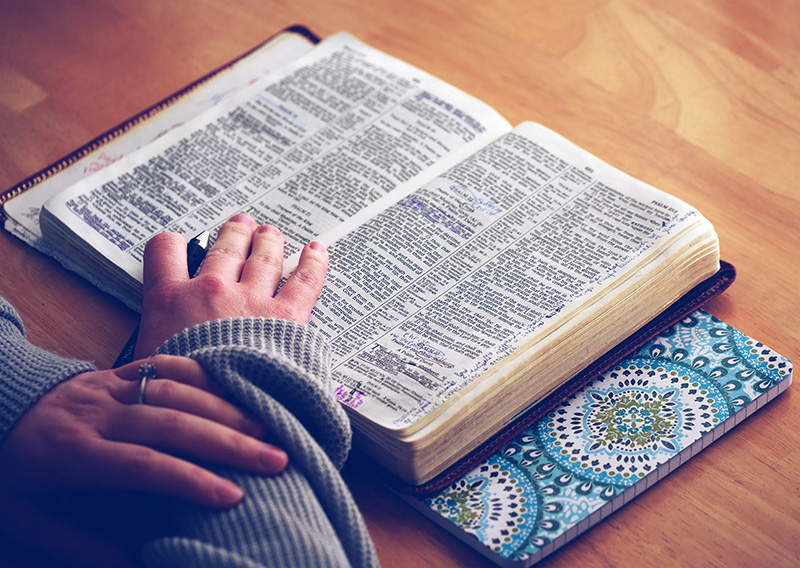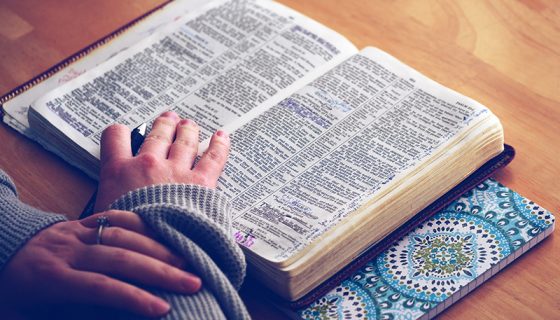
Worship & The Sign Of The Cross – Pr Smith
Notes on the Conduct of the Divine Service and How One Might Conduct Oneself at the Divine Service
ACP: above all: Courteous and Reverent
Why?
Kavanagh, OSB – Elements of Rite
“most intimate facet of the Christian assembly’s lived faith in Jesus Christ and a function of his life giving Spirit within it.”
“[The liturgy] is the sustained summons home to God in Christ. The fundamental way a church stands before the father in Christ.”
“Gottesdienst” – God’s Service
“Heaven on Earth” – Art Just
What is happening? Who is doing it?
Words matter.
Worship or Divine Service?
Heaven is not “up there” so much as where Jesus is.” This is a biblical theology of worship.
Worship in the Bible is people standing in the presence of God and to receive from God his word, his direction, his guidance. God’s presence was always tied to his saving intentions, for God was always present to save his people from their sins.
The entire Old Testament cultic system of sacrifices pointed forward to the sacrifice of the Messiah in a violent death for the sins of the world.
Israel’s worship was centered in God’s presence and therefore in God’s holiness.
Ex 24 is no different from Gen 12:8, or Rev 9, or 8:30 and 11.
1Cor 1:23; Rev 7:3; Rev. 9:4; Rev 14:1
The Sign of the Cross
Invocation, p 184
The sign of the cross may be made by all in remembrance of their baptism.
In the name of the Father and of the + Son and of the Holy Spirit.
Baptism, p 268
The pastor makes the sign of the holy cross upon the forehead and heard of each candidate while saying:
P Name receive the sign of the holy cross both upon your + forehead and upon your + heart to mark you as one redeemed by Christ the crucified.
The use of the sign of the cross traces back to early Christianity, with the third-century treatise Apostolic Tradition directing that it be used during the minor exorcism of baptism, during ablutions before praying at fixed prayer times, and in times of temptation. (Wikipedia)
Fourth-century Father of the Church St. Basil (329–379) said that the Apostles “taught us to mark with the sign of the cross those who put their hope in the Lord”—that is, those who presented themselves for Baptism.1
Origen (c185-c253)
Commenting on Ezekiel 9, “The shape of the letter tau presented a resemblance to the figure of the cross and this represented a prophecy of the sign that Christians make on their foreheads. For all the faithful make this sign when they undertake any activity, especially prayer or reading Holy Scripture.”2
Apostolic Tradition (of Hippolytus) earlier than 235
21:22 After this he pours the oil into his hand, and laying his hand on each of their heads, says, “I anoint you with holy oil in God the Father Almighty, and Christ Jesus, and the Holy Spirit.”
23Then, after sealing* each of them on the forehead, he shall give them the kiss of peace and say, “The Lord be with you.” And the one who has been baptized shall say, “And with your spirit.”
24So shall he do to each one.
42 If you are tempted, seal* your foreheads reverently. For this is the Sign of the Passion, displayed and made manifest against the devil, provided that you do it with faith, not to be seen by men, but by presenting it with skill like a shield.
2 Because the Adversary, when he sees the strength of the heart and when he sees the inner man which is animated by the Word show, formed on the exterior, the interior image of the Word, he is made to flee by the Spirit which is in you. 3 This is symbolized by the Paschal Lamb which was sacrificed, the blood of which Moses sprinkled on the threshold, and smeared on the doorposts. He told us of the faith which is now in us, which was given to us through the perfect Lamb.
4 By sealing* the forehead and eyes with the hand, we turn aside the one who is seeking to destroy us.
* That is, making the sign of the cross.
Tertullian (c155-c220)
The more you go about, to keep your religion close, the more you cause it to be little paste of, and cause the curious Gentile to be the more aware of it. Can you hide your godly going rest, when you sign and mark, both your bed, and your body, with the sign of the cross? And when you do but spit at some unclean thing, that he does, or when you shall rise in the night to pray?3
“We Christians wear out our foreheads with the sign of the cross.”4
Cyril of Alexandria (c. 376–444)
If any disbelieve the power of the Crucified, let him ask the devils; if any believe not words, let him believe what he sees. Many have been crucified throughout the world, but by none of these are the devils scared; but when they see even the Sign of the Cross of Christ, who was crucified for us, they shudder. For those men died for their own sins, but Christ for the sins of others; for He did no sin, neither was guile found in His mouth.5 (Catechetical Lecture 13)
Luther’s Small Catechism (even the 1943 version)
In the morning when you get up, make the sign of the holy cross and say:
In the name of the Father and of the + Son and of the Holy Spirit. Amen.
In the evening when you go to bed, make the sign of the holy cross and say:
In the name of the Father and of the + Son and of the Holy Spirit. Amen.
Luther’s Large Catechism
[71] This is also a blessed and useful habit, and very effective against the devil, who is always around us, lying in wait to lure us into sin and shame, calamity and trouble. He hates to hear God’s name and cannot long remain when it is uttered and invoked from the heart. [72] Many a terrible and shocking calamity would befall us if God did not preserve us through our calling upon his name. I have tried it myself and have indeed experienced that often a sudden, great calamity was averted and vanished in the very moment I called upon God. To defy the devil, I say, we should always keep the holy name upon our lips so that he may not be able to harm us as he would like to do.
[73] For this purpose it also helps to form the habit of commending ourselves each day to God—our soul and body, spouse, children, servants, and all that we have—for his protection against every conceivable need. This is why the Benedicite, the Gratias, and other evening and morning blessings were also introduced and have continued among us. [74] From the same source comes the custom learned in childhood of making the sign of the cross when something dreadful or frightening is seen or heard, and saying, “Lord God, save me!” or, “Help, dear Lord Christ!” and the like. (LC 1)
In the Divine Service
At the absolution
At the announcement of the Gospel
This is reflected in the traditional prayer that is said by the celebrant just prior to the reading: “May the Lord be in my heart and on my lips, that I may worthily and rightly proclaim His Gospel, in the Name of the Father and of the + Son and of the Holy Spirit. Amen.”
The Sign of the Holy Cross is a confessional gesture. It is made with the hand disposed as for a blessing from the head (“My Lord Jesus Christ came down from heaven”) to the breast (“and was incarnate for me”) to the right side (“and was crucified for me”) to the left side (“and entered into my heart”). When made over the people the same relative positions are observed, i.e., from the viewpoint of the officiant the last stroke is made from left to right. When made over the people the Holy Sign should be made at the same height and cover the same area as when made on the person. At the Holy Gospel the crosses are made with the right thumb in an area about an inch in diameter. At all times when the Holy Cross is signed, the left hand is held flat against the breast, unless otherwise engaged. This method of making the sign of the Holy Cross is older than the method in common use in the Roman Catholic Church where the right hand crosses from the left shoulder to the right. (ACP, 6)
When Confessing the Nicene Creed at the Words “and the life of the world to come.”
At the Committal
If the grave is to be blessed:
P Let us pray. O Lord Jesus Christ, by Your three-day rest in the tomb You hallowed the graves of all who believe in You, promising resurrection to our mortal bodies. Bless this grave that the body of our brother /sister may sleep here in peace until you awaken him/her to glory, when he/she will see you face to face and know the splendor of the eternal God, for You live and reign with the Father and the Holy Spirit, one God now and forever. (LSB PCC, 131)
Sand or earth may be poured on the casket in the sign of the cross while the pastor says:
P We now commit the body of our brother/sister name to the ground/its resting place/the deep; earth to earth, ashes to ashes, dust to dust, in the sure and certain hope of the resurrection to eternal life through our Lord Jesus Christ, who will change our lowly bodies so that they will be like His glorious body, by the power that enables Him to subdue all things to Himself.
The pastor may place his hand on the head of the casket as he says:
P May God the father, who created this body; May God the + Son, who by His blood redeemed this body; May God the Holy Spirit, who by holy baptism sanctified this body to be His temple, keep these remains to the day of the resurrection of all flesh. (LSB PCC, 134)
Christians have also made the sign of the cross at the words “Blessed is He who comes” during the Sanctus.
The sign of the cross may also be made at the words “deliver us from evil” in the Lord’s Prayer
Christians may also cross themselves during the Verba (“this is My + body,”; “this cup is the new testament in My + blood”) and the dismissal (“Depart + in peace”). At the altar, you receive the body and blood which Jesus gave and shed for you on the cross.
Finally, the cross may be made during the Benediction (“and + give you peace”), for the peace and communion we have with God is possible only through the cross of Jesus.
1 https://www.wordonfire.org/articles/contributors/a-short-history-of-the-sign-of-the-cross/
2 https://www.wordonfire.org/articles/contributors/a-short-history-of-the-sign-of-the-cross/
3 https://www.tertullian.org/articles/hooper_wyf.htm#text Edited for the modern reader by this author.
4 Marucchi, Orazio. “Archæology of the Cross and Crucifix.” The Catholic Encyclopedia. Vol. 4. New York: Robert Appleton Company, 1908. 20 Jan. 2015 https://en.wikipedia.org/wiki/Sign_of_the_cross#cite_note-7
5 https://www.newadvent.org/fathers/310113.htm

